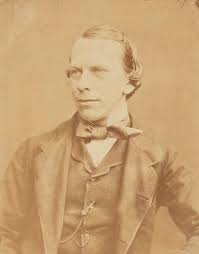Edmund Hugh Tunbridge - but what was his real motive?
Edmund Hugh Tunbridge - but what was his real motive?
38 year old Tunbridge had been going out with 25 year old Margaret Evans for several years and the couple had a child for whom Tunbridge paid 15 shillings per week (75p) in child support. This ended when the child was adopted in August 1921 by the Wignall family.
In January 1922 Margaret found out that she was pregnant again and the couple met at London’s Clapton railway station to discuss the situation on the early evening of Saturday the 14th of January 1922. They went for a walk along the towpath on the bank of the River Lea. Margaret wanted marriage because there was a very real stigma attached to having a child out of wedlock at this time.
A policeman noticed the couple who seemed to be happy and embracing. He looked away and then heard a splash and looked back to see only the man, who was by now walking toward him. He stopped the man who identified himself as Tunbridge but denied any knowledge of a woman having been present.
The officer took Tunbridge back along the bank and discovered Margaret’s body floating in the river. He then arrested Tunbridge. When he was searched a bottle of prussic acid was found in his pocket. The autopsy revealed that Margaret had indeed been poisoned with this and had bruising on her face commensurate with having it forced into her mouth. She had not drowned.
Tunbridge claimed that they had met to discuss marriage and that Margaret had told him she was pregnant, but he had a letter from one George Andrews in his pocket claiming that he was the father of both children.
When confronted with this Margaret had reached into his pocket and removed the bottle of prussic acid and drunk the contents while he was lighting a cigarette.
He claimed the reason for having the prussic acid was as a chemical for photographic development. Andrews’ letter was shown to be a forgery in Tunbridge’s own hand writing.
Tunbridge came to trial at the Old Bailey on the 5th of March 1922 before Mr. Justice Darling. Not surprisingly the jury didn’t believe a word of his explanation for Margaret’s demise.
Poisoning was always considered one of the worst forms of premeditated murder and therefore there was hardly ever a reprieve. The appeal was dismissed, the Lord Chief Justice describing the crime as an ingenious and diabolical one.
He was hanged at Pentonville by John Ellis, assisted by Robert Baxter, on Tuesday the 18th of April 1922. Ellis gave him a drop of 6’ 6” for his 167 lb weight. The LPC4 form recorded that there was “complete separation between the 3rd and 4th cervical vertebrae with fracture and pulping of the cord.”
He left a letter which was made public, saying “Please accept my heart felt thanks for the kindness I have received from the principals of this prison, more especially from the chaplain. I am greatly indebted to him.”













Comments
Post a Comment